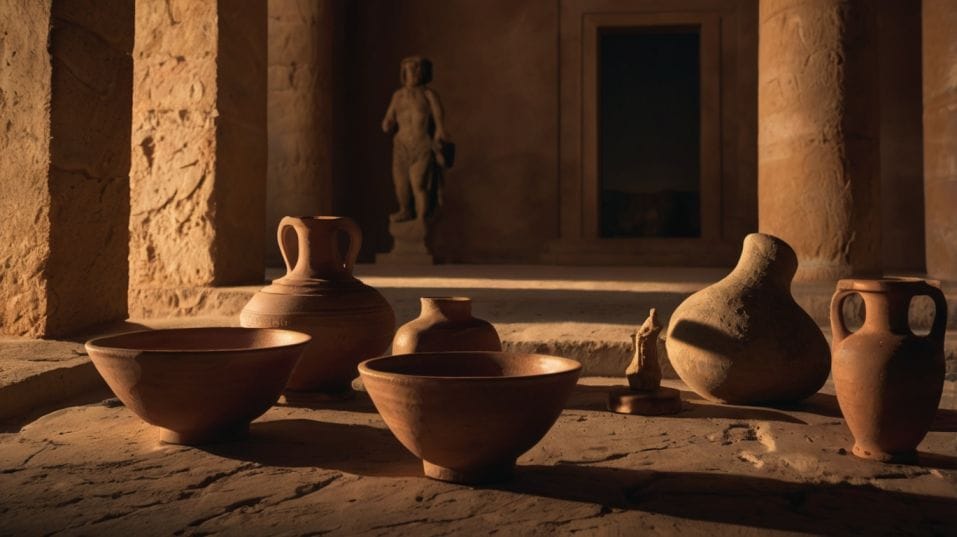Why Some Cultures Watered Down Wine (On Purpose)
Discover why ancient cultures watered down wine—and how that insight can reshape the way you drink, serve, and enjoy wine today.

Why would ancient wine lovers willingly dilute their wine? If you’re just starting to explore beyond basic tasting notes, this might seem counterintuitive.
But in the world’s earliest wine-drinking cultures, watering down wine wasn’t a compromise—it was a craft.
This practice wasn’t about weakening the drink; it was about enhancing how wine served the moment. Understanding why they did it unlocks a smarter, more thoughtful way to enjoy wine today—one rooted in purpose, not power.
A Tradition Rooted in Culture, Not Compromise
Let’s start with ancient Greece. Symposiums—the original wine tastings—were social, intellectual gatherings where wine flowed freely but never recklessly.
Guests reclined, debated philosophy, and drank wine that was cut with water, sometimes with herbs or spices, often in ratios as high as 3:1.
Drinking undiluted wine (referred to as akratos) was considered barbaric, a marker of poor self-control and worse manners.
The Romans inherited this approach and spread it across their empire. Wine was central to their daily life, but so was the idea of temperantia—moderation. Strong, full-bodied wines existed, but they were rarely consumed without dilution.
They were mixed in large communal vessels called craters, then ladled into drinking cups with added water. It wasn’t just practical—it was philosophical. Watering wine made it civilized.
In other words, dilution wasn’t a shortcut. It was a strategy. It allowed wine to serve its role at the table, across long meals, under hot sun, in gatherings where clarity and companionship mattered more than getting drunk.

Stronger Doesn’t Mean Better
Fast forward to today, and the modern wine landscape can feel like it’s flipped the script. Power is prized.
High alcohol, deep extraction, rich fruit, dense oak—these are the markers many drinkers are taught to admire. A “serious” red, the thinking goes, should feel bold, full-throttle, and leave a trail.
But that idea misses the point of what wine is supposed to do. A wine doesn’t have to overwhelm your palate to make an impression.
In fact, some of the best wines—those that elevate a meal, that invite you to pour another glass—are those that show restraint. Wines with freshness, lift, and the ability to breathe with the moment instead of crowding it.
When ancient cultures watered wine down, they were honoring this balance. They were ensuring that wine enhanced the experience without overpowering it. And that’s something every thoughtful wine drinker should pay attention to today.
There’s a Modern Version of This Mindset
You don’t have to dilute your wine with tap water to follow this principle—though in certain casual settings, even that has a place. More often, the modern version is about being deliberate in the wines you choose and the way you serve them.
Lighter, Lower, Smarter
Lighter-bodied reds like Gamay or Frappato. Crisp whites with good acid and minimal oak. Sparkling wines at low ABVs.
Wines designed for daytime drinking, long meals, warm weather. These aren’t gimmicks—they’re cultural throwbacks, designed for pleasure over power.
Temperature matters too. In hot climates, even a bold red can benefit from a slight chill. The cooler temperature brings out structure, tamps down sweetness, and lets acidity shine.
It’s not “wrong” to chill a red—it’s smart. Just as watering wine once helped maintain its drinkability, modern techniques like chilling or decanting serve the same goal: making the wine fit the moment.
Watering Wine as Tuning, Not Tampering
There’s a quiet truth many wine pros know: not every bottle is ready the second you pour it. Some wines come out tight, hot, or flat. And there’s nothing sacrilegious about adjusting your pour to bring it into balance.
In more casual settings, especially outdoors, some sommeliers and winemakers won’t blink at tossing in an ice cube—or even a splash of soda water.
Not to ruin the wine, but to reveal it. A slight dilution can open up aromas, stretch the finish, and help a stiff wine relax.
That said, it’s not about fixing flaws—it’s about tuning to taste. Like salt in food, a subtle adjustment can bring a dish into focus. With wine, it's the same.
Your preferences, your environment, your meal—they all matter. The more you pay attention to what feels right, the more confident you become in adapting wine to serve you, not the other way around.
Rethinking What “Proper” Drinking Looks Like
It’s easy to assume that the right way to drink wine is the way it’s poured in a tasting room—clean glass, ideal temperature, nothing added, no breaks in ritual. But that version of wine service is only one small slice of the full story.
Across centuries and cultures, wine has taken on many forms: diluted, spiced, chilled, oxidized, cloudy. What matters more than format is intention.
Are you drinking for connection, for celebration, for nourishment, for pleasure? If so, the “rules” soften. They bend toward what’s practical, personal, and contextual.
The Greeks and Romans weren’t breaking wine down—they were building it up to serve a specific function. That idea survives today in the concept of vin de soif—a wine to quench thirst.
These wines are often lower in alcohol, higher in acid, and built for real-world drinking. Whether it’s a beach picnic, a multi-course dinner, or just a glass with a simple lunch, these are wines that meet the moment without overshadowing it.
Final Thoughts
Cultures that watered down wine weren’t dumbing it down—they were elevating the experience. They understood something essential: wine isn’t just about flavor or alcohol.
It’s about harmony, setting, and longevity. Whether you're drinking in a palace, on a patio, or around a humble table, the same principle holds true—wine should adapt to the occasion, not dominate it.
So here’s your challenge: next time you open a bottle, think about how it fits. Don’t be afraid to chill it, to pair it with something unexpected, or even to soften it if it’s out of balance.
Pick a wine that supports the moment, not one that shouts over it. Because the more you drink with intention, the more naturally you’ll begin to choose wines that don’t just taste good—they feel right.
Try something light. Try something new. Or pour something familiar in a different way. That’s how great wine habits start: not with rules, but with curiosity and a little cultural wisdom.




